In bulk drugs used to produce pharmaceuticals, environmental factors such as temperature and humidity can cause changes in crystalline polymorphism, even if the composition remains unchanged. Because characteristics such as solubility and rate of absorption differ for each crystalline polymorphism, crystalline polymorphisms have to be differentiated and quantified when developing and manufacturing pharmaceuticals. X-ray fluorescence spectrometry can be used to determine the type of crystalline structure to which a specimen belongs.
Life science
Academia
- Semiconductor
- Electronic device
Battery
Other
CLICK
ON THE MAP!
- 20µm
- 0.5µm
- 30µm
- 20µm
- 300µm
Field/Category
Technology
Product name/
Series name
Function/Role
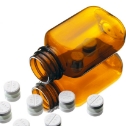
Pharmaceutical
- X-ray
Fluorescence
To ensure the safety of pharmaceuticals ingested by patients, elements that are impurities in the pharmaceuticals must be controlled. X-ray fluorescence spectrometry plays a role in controlling the elements in impurities.
- Handheld
Raman
At pharmaceutical production sites, all materials received must be checked to ensure that there is no error in them. By using a handheld Raman spectrometer, manufacturers can measure the contents of materials without removing them from the polyethylene containers and glass bottles in which they are received, thereby avoiding concerns about contamination.
- X-ray Imaging
(CT)
The speed with which drugs take effect (immediate effectivity/delayed effectivity) and the duration of effect (sustained release) are determined in the drug formulation and design phases. XCT is mainly used to inspect and manage internal structure, searching for cracks inside granules, tablets and capsules (“capping”), gaps, non-uniformity of coating, separation and phase changes. Eliminating these defects maximizes the effectiveness of drugs and prevents adverse effects.
- Thermal
analysis
Thermal analyzers measure changes in pharmaceuticals from application of heat, such as changes in weight and energy and emission of gases. They are useful in applications such as comparing quantities of a main ingredient in a series of pharmaceuticals and surveying the stable shapes of pharmaceuticals.
Drug discovery
- Monocrystalline
structural analysis
One o f t he m ost c ommonly u sed m ethods o f d eveloping e ffective p harmaceuticals i s t o d esign t he f undamental compounds of the pharmaceuticals based on the shapes of the target proteins. This approach requires accurate knowledge not only of the proteins but also of the compounds that will work as the pharmaceuticals. Moreover, pharmaceutical ingredients can have different effects depending on whether their structure is right-handed or left-handed (the difference in appearance one sees in a mirror); to prevent adverse effects, those differences must be accurately identified. Single crystal structural analysis is a means of examining in detail the structures of compounds and the differences among them, and is used by a wide range of research facilities to protect our safety.

Animal
Hospital
- X-ray Imaging
(CT)
- Cosmo Scan/Stella Scan series
(The Cosmo Scan/Stella Scan series are only available in China and Japan.)
The skeletons and internal organs of small animals can be observed while the animals are alive. This technology is also valuable in vital research on treatment and prevention of illness in humans, such as testing of safety and efficacy during drug development. In recent years, this technology has contributed significantly to COVID-19 research.
Biomedical
sample
- CT
Observation of the structure of bones, teeth and extracted organs in superfine detail plays a vital role in precious research to improve people’s health, enabling treatment and prevention of diseases in greater numbers of people.
- 20µm
Field/Category
Technology
Product name/
Series name
Function/Role
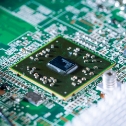
Electronic device
- Thermal
analysis
Thermal analyzers are used to evaluate the thermal characteristics (melting point, rate of expansion, glass transition) of epoxy resins, ceramics and lead-free solders used in electronic circuit boards. They provide vital feedback on selection and compounding of materials and production processes.
- X-ray Imaging
(CT)
When electronic products fail, the cause of the failure must be isolated, and for this the product must normally be finely taken apart and sectioned. With XCT, however, these causes can be identified in a non-destructive manner, providing valuable feedback to prevent recurrence of the failure. Growing numbers of manufacturers are incorporating XCT into manufacturing processes for pass/failure judgment of products.
- X-ray
Fluorescence
The use of hazardous substances such as lead and mercury in electronic devices is subject to restrictions, requiring confirmation through receiving inspection at production sites. X-ray fluorescence spectrometry enables these hazardous substances to be detected easily and non-destructively.
- Monocrystalline
structural analysis
The machines we depend on in our daily lives use large numbers of electronic components. Semiconductors,magnetic bodies and luminescent materials are representative examples. When these materials are crystalline in nature, their structure can be elucidated in detail using single crystal structural analysis,which can tell us which alignments of crystals affect which properties of materials. This information plays a valuable role in the design and manufacture of new electronic components.
- Mercury
Analysis
The RoHS Directive restricts the use of mercury in electronic and electrical equipment. Mercury from the eletronics can be extracted and measured in MA series through through thermal decomposition, gold amalgamation and CVAAS measurement.
- 30µm
Field/Category
Technology
Product name/
Series name
Function/Role
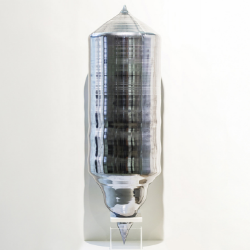
Ingot
- X-ray
Diffraction
Rapid analysis of crystal orientation of wafers and ingots for various substrates.
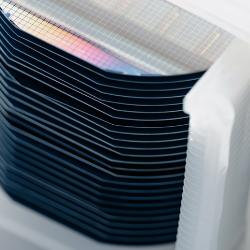
Substrate
- X-ray
Topography
- Total X-ray
Fluorescence
Expansive suite of tools and applications for in-fab and near-fab support of semiconductor manufacturing processes. X-ray topography imaging system is used for non-destructive dislocation imaging. Total-reflection X-ray fluorescence (TXRF) spectrometers are widely used to measure surface contamination on substrates.
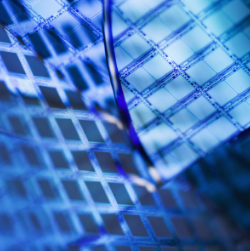
Wafer:
Thin Films and Devices
- X-ray
Diffraction
- X-ray
Reflectivity
- X-ray
Fluorescence
- Small-angle
X-ray Scattering
Broad capability to analyze thickness, composition, and crystalline quality of metal, dielectric, and semiconductor thin films used in leading edge semiconductor manufacturing. X-ray reflectivity (XRR) enables accurate thickness measurements for ultrathin films, including films opaque to traditional optical measurements. X-ray fluorescence(XRF) allows accurate measurement of film composition on blanket films and patterned wafers, with configurations and sources customizable to specific elements of interest. High resolution X-ray diffraction (HRXRD) provides specialized metrology for epitaxial films, with robust measurement of thickness, composition, and strain for thin films and multilayers.
Grazing Incidence Small-Angle X-ray Scattering (GI-SAXS) provides advanced morphological characterization for complex structures in cutting-edge logic and memory devices. Transmission Small-Angle X-ray Scattering (T-SAXS) offers detailed, non-destructive evaluation of high aspect ratio holes and trenches found in vertical memory devices.

Wafer:Mask
- X-ray
Diffraction
- X-ray
Fluorescence
- Small-angle
X-ray Scattering
- Total X-ray
Fluorescence
Adapts robust, established film characterization techniques for advanced photomask metrology. X-ray reflectivity (XRR) provide robust analysis and quality control for multilayer reflectors underpinning EUV masks. Total X-ray reflectance fluorescence (TXRF) enables non-destructive analysis of trace contaminants on masks and mask blanks.

Wafer:
Interconnects
- X-ray
Diffraction
- X-ray
Reflectivity
- X-ray
Fluorescence
Versatile characterization of thickness, composition, and grain size for interconnect metals, including liners and seed layers. S uitable for routine tool monitoring and inline process control. A pplications extend to complex, modern interconnect schemes such as through-silicon via and buried power rail architectures.

Packaging
- X-ray
Fluorescence
Hybrid X-ray fluorescence/optical microscopy platform enables characterization of bump shape, thickeness, and composition with micron-scale spatial resolution. Extendable to high accuracy /precise measurements of scale microbumps, hybrid bonding integration schemes.
- X-ray Imaging
(CT)
- New tool under development
We are developing an inline inspection system that utilizes X-ray imaging technology to automatically detect defects in micro bumps and through-silicon vias (TSVs) used in advanced packaging.
- 20µm
- 0.5µm
Field/Category
Technology
Product name/
Series name
Function/Role

Battery
- X-ray
diffraction
Demand for lithium-ion batteries to power mobile devices and EVs is rising. Extending the working life of lithium-ion batteries requires direct observation of battery status during charging and discharging. X-ray analysis makes it possible to confirm changes during charging and discharging without opening the battery, enabling more accurate analyisis.
- X-ray
Fluorescence
Managing the characteristics of lithium-ion batteries (LIBs) and other batteries requires control of batteries’ composition, particularly of impurities. Using X-ray fluorescence spectrometry makes examination of elements quick and simple.
- X-ray Imaging
(CT)
LIBs, which are currently our mainstay batteries, mainly consist of a wrapped layered structure of positive electrodes, negative electrodes and separators. X-ray computed tomography (XCT) is used to inspect these products to ensure that there are no wrapping errors (slippage of wrapped layers, etc.) or impurities in the materials. These inspections are conducted with utmost care, as wrapping errors and impurities can result in damage to the batteries or, at worst, major accidents such as explosion and burning of the batteries.
- X-ray
Fluorescence
- Niton series
(Niton is available only in Japan)
Recycling of batteries has become especially active in recent years, to ensure effective use of precious resources. Handheld X-ray fluorescence spectrometry equipment enables on-the-spot inspection of the elements contained in recycled products.
- Monocrystalline
structural analysis
Detailed examination of the structure of materials is vital for improving the performance of products such as lithium-ion batteries and creating new materials. B y e xamining materials at the molecular level through a method called single crystal structure analysis, it is possible to understand the qualities and workings of a material. This approach enables us to learn how batteries work and why their materials are so electrically conductive. In the field of solid-state batteries, the single crystal structure analysis is used to develop innovative materials and technologies day by day.
Field/Category
Technology
Product name/
Series name
Function/Role

Forensics/
Archaeology/
Cultural Heritage
- X-ray
diffraction
Examining the chemical composition of unearthed artifacts can provide the chemical grounds for forming hypotheses on how items were made and reexamining questions of where items were produced.
- X-ray Imaging
(CT)
XCT can be used to confirm the contents of items without damaging them, enabling viewing of the interior of precious sites dating back centuries and even millennia. Items that can never be restored once broken can be examined with peace of mind. This technology can determine not only what a thing is but also the extent of its deterioration.
- X-ray
Fluorescence
By examining the elements in a work of art, the sources of materials can be discerned, and by extension trade routes identified. X-ray fluorescence spectrometry permits examination of precious artworks without damaging them.

Asbestos,
Free silicic acid
- X-ray
diffraction
Crystalline silica dust is recognized worldwide as a carcinogen. X-ray fluorescence spectrometry is garnering attention as a fast and reliable way of analyzing trace amounts of crystalline silica included in specimens. This device can detect crystalline silica in quantities as minute as ⅒ the value rated by the Ministry of Health, Labour and Welfare (MHLW).
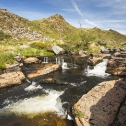
Soil,River
- X-ray
Fluorescence
The purpose of environmental monitoring is to monitor water quality and pollution levels in soils. X-ray fluorescence spectrometry contributes to multipoint analysis and evaluation through its ability to analyze elements quickly and easily.

Space
- Thermal
analysis
By analyzing samples retrieved from the asteroid Ryugu by the Hayabusa 2 probe using thermal analyzers, scientists can learn the types of gas the asteroid emits and the temperatures and quantities at which it emits them. These measurement results are valuable in inquiring into the origins of the Earth and the solar system.
- X-ray
Fluorescence
Analysis of the elements in rocks and minerals is essential in studying the evolution of planets and the structure of the Earth.In recent years, Rigaku has conducted element analysis on samples retrieved by the probe Hayabusa 2 from the asteroid Ryugu. Rigaku has identified 20 elements in these samples, including oxygen and carbon.
- X-ray
Fluorescence
Rigaku has analyzed granules retrieved from Bennu, a type-B asteroid, by the NASA probe Osiris Rex. This analysis is expected to lead to discoveries about the history of Bennu and about similarities and differences between Bennu and the asteroid Ryugu.
- 20µm
- 0.5µm
- 50µm
- 0.5µm
- 30µm
- 20µm
Field/Category
Technology
Product name/
Series name
Function/Role

Polymer
(Film)
- X-ray
diffraction
Measuring with X-ray fluorescence spectrometry enables non-destructive evaluation of characteristics of polymer film such as mechanical strength and transparency.
- Thermal
analysis
Thermal analyzers can be used to survey the thermal characteristics (melting point, rate of expansion) of polymers and analyze their gas emissions. They play a role in determining appropriate conditions for use of polymers and methods for their disposal.
Polymer
(Resin)
- X-ray Imaging
(CT)
The range of applications of plastics is expanding, for purposes such as reinforcement and weight reduction. XCT is used for applications such as observing the condition of reinforcing fibers in plastics and quantitative evaluation of internal gaps. By improving quality while increasing production efficiency and reducing costs, XCT contributes greatly to the goal of producing good products cheaper.

Ceramics
- X-ray
diffraction
Accurately assessing characteristics of cement such as curing time and strength requires analysis of high precision and accuracy. Quantitative analysis using X-ray fluorescence spectrometry is finding increasing favor in cement research and quality control for its simplicity and quick results.
- X-ray
Fluorescence
The composition of ceramics is stringently controlled to ensure that their characteristics match their intended applications. X-ray fluorescence spectrometry is used in quality control as it enables solids to be analyzed as they are.
- Thermal
analysis
- DTA8611
(DTA8611 is available only in Japan)
Ceramic parts are fired at extremely high temperatures. High-quality ceramics require binders that burn off efficiently during firing. Thermal analyzers play a role in simulating complex manufacturing processes.
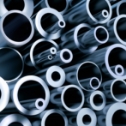
Metal
- X-ray
diffraction
When developing metal-based materials, obtaining metal-based materials that deliver the target characteristics requires evaluation under a wide range of temperatures and atmospheric conditions. X-ray fluorescence spectrometry enables crystal phase changes to be observed in detail during heating under special atmospheres such as hydrogen, ammonia and steam.
- X-ray
Fluorescence
Control of electroplating deposition and metal composition is vital in preserving product functionality. X-ray fluorescence spectrometry is widely used in metal manufacturing industries for its ability to measure specimens as they are.
- X-ray
Fluorescence
- Niton series
(Niton is available only in Japan)
Metal recycling has grown increasingly active in recent years as companies strive to make effective use of limited resources. Handheld X-ray fluorescence spectrometry devices can be used to inspect the elements in recycled products on the spot.
- Thermal
analysis
Thermal analyzers can be used to survey the thermal characteristics of metals including transformation points, melting points and rates of expansion. Metals are used in a wide range of environments, so information on their thermal characteristics is vital for selecting the right metals for a particular application or use environment.
- Monocrystalline
structural analysis
One technology that is widely used to examine the internal structure of metal materials is X-ray analysis. Data obtained from single crystal structural analysis played a vital role in a project to study "quasicrystals", materials with special properties, which won the Nobel Prize in Chemistry in 2011. These data are used alongside observational results from electron microscopes, which can detect extraordinarily fine details, providing crucial aid to understanding the detailed structure of quasicrystals.
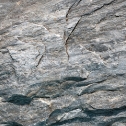
Mining
- X-ray
diffraction
In research on the evolution of planets and the structure of the Earth, the composition and molecular structure of rocks and minerals are routinely analyzed. X-ray fluorescence spectrometry, enables examination of the components of mineral facies and their composition.
- Thermal
analysis
Cement made from minerals requires precise changes in weight in order to examine quality. In addition to thermal characteristics obtained using TG-DTA, when combined with GCMS, thermal analysis can be used to measure CO2 volumes, which are vital for environmental measures.
- Mercury
Analysis
One of the most common anthropogenic sources of mercury is the combustion of fossil fuels. Measuring and understanding the concentration of mercury in the fuel and coal, can help to reduce mercury emissions from factories and facilities.
- Monocrystalline
structural analysis
Many minerals are found in crystalline form. Using single crystal structural analysis, researchers can examine the three-dimensional s tructure of minerals, examining how the atoms and molecules are aligned, for example. Recently this technique has been applied in research on "hokkaidoite", a mineral selected as a natural monument by the Japanese government, to analyze its fine structure.

Food
- X-ray
diffraction
The flavor and texture of butter change dramatically with temperature. Accordingly, producers pay close attention to the crystallization of fats and oils to maintain favorable product quality. X-ray fluorescence spectrometry and differential scanning calorimetry (DSC) enable surveying of characteristics of butter such as crystalline structure and melting point.
- Thermal
analysis
Thermal analyzers measure foods in many ways, helping to determine the melting point of chocolate and the softness of chewing gum, for example. They also play a role in evaluating features such as ideal storage conditions and the “melt-in-the-mouth” feeling of foods.
- X-ray Imaging
(CT)
Expressing flavor, texture and so on in numbers is no simple matter. XCT expresses numerically such features as content by percentage, homogeneity and the number and size of bubbles, delivering good taste experience through high-level quality control.
- Mercury
Analysis
Inorganic mercury contained in rivers and seawater is converted to methylmercury by microorganisms in the environment and taken up by fish and shellfish through the food chain. It is then taken up by humans who eat it. Measuring and understanding the concentration of mercury in water source and food is one way to safeguard human's health from mercury poisoning.
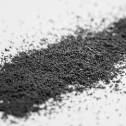
safe and
secure
- Handheld
Raman
The handheld Raman spectrometer is used in the security field, including law enforcement, customs and defense, to guard against the threat of terrorism that is growing worldwide. Chemical weapons, explosives and their precursors can be detected while still in their containers, enabling on-the-spot threat assessment.
- Handheld
Raman
Handheld Raman spectrometers are used in fields such as customs and drug interdiction to identify stimulants, narcotics and other illegal drugs. These devices can detect substances through their containers in a non-destructive manner, allaying concerns about destroying evidence.

Fragrances,
Agrochmical
- Monocrystalline
structural analysis
One technology related to single crystal structural analysis is the “crystalline sponge method.” In this Nobel Prize‒ candidate technology, crystals are used as “sponges” to hold gases or liquids of volatile flavorings and small amounts of agrochemical metabolites, to analyze the shapes of mole- cules. This method plays a valuable role in tasks such as research on novel chemicals and confir- mation of product and material safety.

Cosmetics
- Mercury
Analysis
Mercury was sometimes used in cosmetics because it is an inexpensive raw material that has whitening and antiseptic properties. Even today, cosmetics containing high concentrations of mercury are distributed in some countries. Its toxicity is harmful to the health of the user. It is important to know the concentration of mercury in cosmetics and to prevent the production and distribution of products containing mercury.

Soil
- Mercury
Analysis
Mercury in soil can migrate into water bodies through rain and groundwater, posing a threat to aquatic ecosystems. Mercury settled in bottom sediments of oceans, rivers, and lakes can leach out and lead to serious water contamination. MA & RA Series of mercury analyzers provide precise measurement of mercury concentrations in soil, its eluents and water respectively, helping to monitor and prevent environmental pollution at its source.

Working
Environment
- Mercury
Analysis
Mercury is an extremely toxic element that can vaporize easily, even at room temperature, leading to high concentrations in the air. With portable mercury analyzers, you can monitor mercury levels in the workplace with prompt alert in real time, ensuring safety protocol to be delployed in time.

Tap Water
- Mercury
Analysis
Tap water is essential to our daily lives. To protect public health, stringent standards such as JIS, EPA, ISO and more are set to monitor mercury concentrations in tap water. Our fully automated mercury analyzers enable precise and highly sensitive detection of even the smallest traces of mercury with fully automated process that provides result with excellent precision and accuracy.

Stack Gas
- Mercury
Analysis
The Minamata Convention, launched in 2017, calls for strict regulation and reduction of mercury emissions into the atmosphere to protect our environment and public health. Our state-of-the-art continuous monitoring analyzers play a crucial role in this effort, providing real-time, precise measurement of mercury concentrations from these anthropogenic emissions.

Oil &Gas
Exploration
- Mercury
Analysis
Mercury is naturally present in the earth's crust, and as a result, it can enter refinery processing plants along with raw materials. Accumulated mercury can lead to Liquid Metal Embrittlement, compromising structural integrity and potentially resulting in catastrophic failures. Additionally, mercury contamination can degrade catalyst performance and cause pipe corrosion. By accurately measuring mercury concentrations in natural resources, we can prevent these issues, safeguard plant operations, and ensure a clean and stable energy supply.
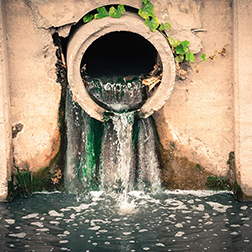
Waste and
Wastewater
- Mercury
Analysis
In Japan’s past, the rapid industrialization era led to severe pollution issues, such as Minamata Disease,caused by toxic mercury waste. Our advanced solutions are designed to address diverse environmental challenges: the MA series excels in analyzing mercury in solid waste, the RA series ensures precise measurement in wastewater, and the versatile EMP series monitors mercury in air effectively. Together, these analyzers provide comprehensive mercury management to safeguard our environment and health.

Environment
- Mercury
Analysis
Mercury, the only metal that remains liquid at room temperature, easily vaporizes and disperses into the environment. Once released, it travels across the globe, accumulating in the atmosphere, water, and soil without breaking down, posing a long-term threat to ecosystems and human health. To address this, stringent mercury concentration standards have been established for air, water, and soil quality. Our comprehensive range of analyzers is designed to analyze these environmental application specifically with excellent precision and accuracy.

